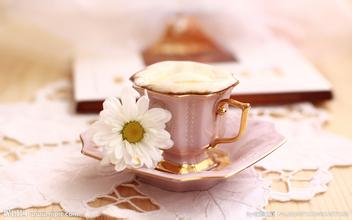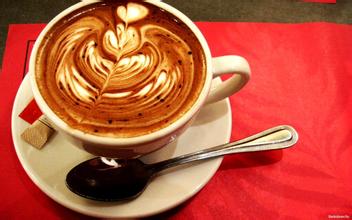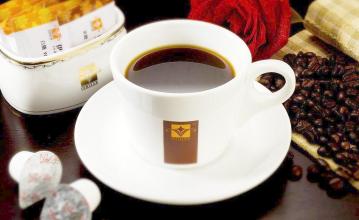Introduction to the complex aroma of Esmeralda Manor Coffee in Panama
Panama is located on the Panamanian isthmus in Central America, bounded by Colombia to the east and the Pacific Ocean to the south.
It is bordered by Costa Rica to the west and the Caribbean to the north. The territory is S-shaped to connect North and South America, and the Panama Canal connects the Atlantic and Pacific oceans from north to south. It is known as the "bridge of the world". [5] Panama has a land area of 75517 square kilometers, a land length of 772km and a width of between 60km and 177km. The coastline is 2988 kilometers long and the land boundary is 555 kilometers long. In terms of longitude and latitude, Panama is located between 7 °N and 10 °N and 77 °- 83 °W: cultivated land accounts for 8.9%, permanent pasture accounts for 20.0%, forests and woodland account for 43.0%, and others account for 28.1%. The per capita arable land of 0.6 acres of Panamanian forest is rich in resources, and there are many tree species, including mahogany, western fir, teak, mahogany, cedar, and other valuable wood, and the forest area of Dalian Province in the east is the most widely distributed. however, due to the lack of market and due to national defense and protection of the natural ecological environment and other reasons, it has not been fully developed. [5] according to FAO estimates in 2010, the forest area of Panama is 4.29 million hectares, accounting for 57% of the land area. the Panamanian national emblem was launched in 1904 by a brown eagle with its head held high.
It stands on the national emblem with a white ribbon with the Panamanian motto "for the benefit of the world". In the middle of the national emblem is the brown isthmus of Panama, the blue Pacific and Caribbean seas, and the Panama Canal that connects them; under the blue sky, a bright moon has risen, the corresponding sunset is still shining in all directions, symbolizing the arrival of Panama's independence "at sunset and moonrise"; the silver sword and rifle crossed on the upper left have experienced the ups and downs of hundreds of years of war on Panamanian land. The T-pick and shovel on the upper right represent the country's call for active construction and hard work; the sheep's horn overflowing with gold coins and the golden two-winged flywheel symbolize the progress and prosperity of the country. Four national flags are decorated around the national emblem, and the top nine golden five-pointed stars represent the nine provinces of Panama
Panama is a small country located in the center of the American continent. The waters of the Atlantic and Pacific oceans flood its beaches.
Panama is located at 9 degrees north latitude, the meeting point of the Central Mountains, where Mount Baru, one of the highest volcanoes in Central America, is located.
The Baru volcano has an altitude of more than 11400 feet, and the land around it is rich in nutritious and fertile soil, providing sufficient conditions for the sowing and cultivation of coffee endemic to Panama.
The appropriate microclimate, soil, temperature and height of these highlands are suitable for sowing, planting and harvesting a variety of unique coffees. These coffees have jasmine, citrus, ripe fruit, berries, caramel, special sweetness, vanilla, chocolate and other unique flavors.
Panamanian coffee is classified and numbered into small batches, which are designed to have a small capacity for optimal management, and classification numbers allow buyers to understand and track the entire process.
Because of its small quantity, Panamanian coffee products are based on special coffee. The country provides its high-quality products to specialized stores around the world, such as Denmark, Britain, Greece, Norway, Sweden, South Korea, Japan, Taiwan Province of China and the United States. The microclimate of the Panamanian highlands is the most important resource that makes Panamanian coffee unique. The most important resource that makes Panamanian coffee unique is its microclimate. The east-west environment of the Republic of Panama converges cold air over 6500 feet through the Central Mountains, creating a variety of microclimates in the Boquete and Volc á n-Candela regions, making it a major source of Panamanian coffee. These unique coffees are cultivated in the nutritious and balanced land located in the Balu volcano region, and the old world is famous for its early taste of the sun. Yega Xuefei in the Sidamo region is suitable for sun treatment with its unique small seed coffee. As a result, the fully ripe fruits are picked by hand, washed and dried on the mat ground, and kept with parchment before shipment. After shelling machine screening, and then after strict manual selection before export. Fragrant fruit and floral flavor, slightly turmeric, cinnamon aroma, is a preference for fruity and sour coffee your best choice Incht Manor is located in Guatemala's famous producing area of Vivette South Fruit Plateau, since the Aguirre family began to grow coffee in 1900, the manor name "Injerto" is taken from a local fruit name The Pacamara species on the site are 2013, first place in the 2012 Guatemala COE Competition, and third place in 2011 coffee from Sumatra, all known as Mantenin, with a special soil aroma, sweetness of sugar and honey, chocolate, walnut, hazelnut, and the herbal flavor of Mantenin Coffee. The wet aroma has a sweet "SARS" smell and aromatic beer smell, with darker malt aromas and spicy flavors. It is much brighter, more meticulous and vivid than ordinary beans in Sumatra. There is a deep taste of malt, as well as sucrose and creamy caramel, delicious, aromatic wood, cinnamon, and the "cedar" flavor of Chateau Lafayette (chatelaulafite). The rose summer is full of sweetness and cleanliness on the palate, with rich aromas ranging from berries and citrus to mango, papaya and peach. A very obvious lemon (bergamot) general aftertaste is also a typical cup test attribute. So far, Rose Summer has been the champion of coffee varieties. [cup evaluation] moderate thickness, sweet, multi-layered tropical fruit flavor, rose type aroma, aftertaste

Important Notice :
前街咖啡 FrontStreet Coffee has moved to new addredd:
FrontStreet Coffee Address: 315,Donghua East Road,GuangZhou
Tel:020 38364473
- Prev

Introduction to Coffee Flavor and Taste characteristics of Santa Rita Manor in Colombia
The climatic conditions in Costa Rica are very different, completely subverting the classification of the four seasons of the year, there are only two seasons, the rainy season from April to December, and the dry season from the end of December to April of the following year, also known as summer. The annual average temperature in San Jose, the capital, ranges from 15 ℃ to 26 ℃, while the temperature in coastal areas is relatively high, with a night average temperature of 2 in the Caribbean.
- Next

Introduction to the flavor and taste of high-quality coffee from Lazmus Manor, Colombia
In his letter from Jamaica in 1815, Bolivar envisioned that when South America was liberated from Spanish colonial rule, New Granada and Venezuela should form a country, named Colombia. In August 1819, Bolivar's Patriotic Army defeated the Spanish colonial army at the Battle of Boyaca and liberated Bogota. So, New Granada and Venezuela
Related
- Does Rose Summer choose Blue, Green or Red? Detailed explanation of Rose Summer Coffee plots and Classification in Panamanian Jade Manor
- What is the difference between the origin, producing area, processing plant, cooperative and manor of coffee beans?
- How fine does the espresso powder fit? how to grind the espresso?
- Sca coffee roasting degree color card coffee roasting degree 8 roasting color values what do you mean?
- The practice of lattes: how to make lattes at home
- Introduction to Indonesian Fine Coffee beans-- Java Coffee producing area of Indonesian Arabica Coffee
- How much will the flavor of light and medium roasted rose summer be expressed? What baking level is rose summer suitable for?
- Introduction to the characteristics of washing, sun-drying or wet-planing coffee commonly used in Mantenin, Indonesia
- Price characteristics of Arabica Coffee Bean Starbucks introduction to Manning Coffee Bean Taste producing area Variety Manor
- What is the authentic Yega flavor? What are the flavor characteristics of the really excellent Yejasuffi coffee beans?

